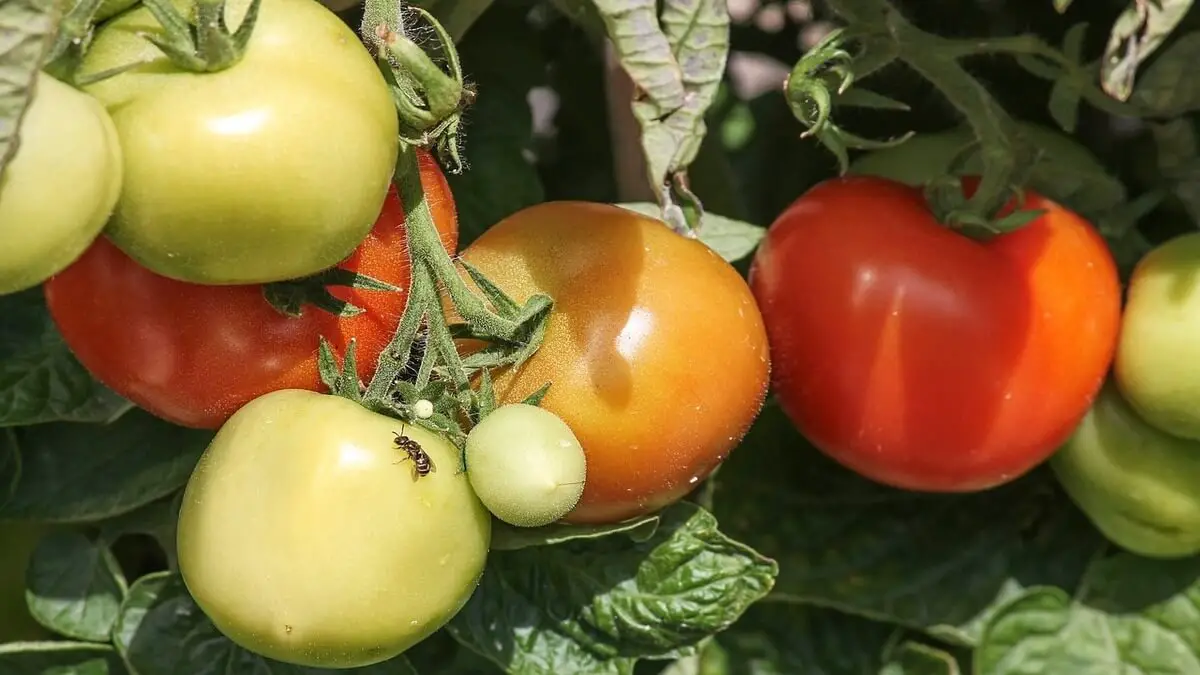How to Grow Mortgage Lifter Tomatoes
Willam Estler, a gardener from Barboursville developed tomato cultivars called mortgage lifter tomatoes (Solanum lycopersicum). He registered this name legally in 1932. He paid off his gathered debts within a few years by selling this product. Finally, he died in Oct’2012.
This article focuses on growing mortgage lifter tomatoes, maintaining, harvesting, and uses.
There is a confusion in some internet sources regarding who developed mortgage lifter tomatoes. Some of them indicate M.C. “Radiator Charlie” Byles developed these cultivars. However, it is proven that Estler and Byles developed different cultivars.
Generally, the original version of Mortgage Lifter tomatoes (heirloom tomato) is popular for their mildly sweet flavor. They can weigh almost 900 grams. During the great depression era, there were numerous tomato breeds available in the market.
In fact, Estler’s and Byles’ cultivars gained popularity, due to their excellent taste. Also, the demand for these cultivars grew high in the nursery plant market. Following Estler, many small nursery owners and farmers recovered from their debits by selling these cultivars.
Table of Contents
Characteristics of Mortgage Lifter Tomatoes
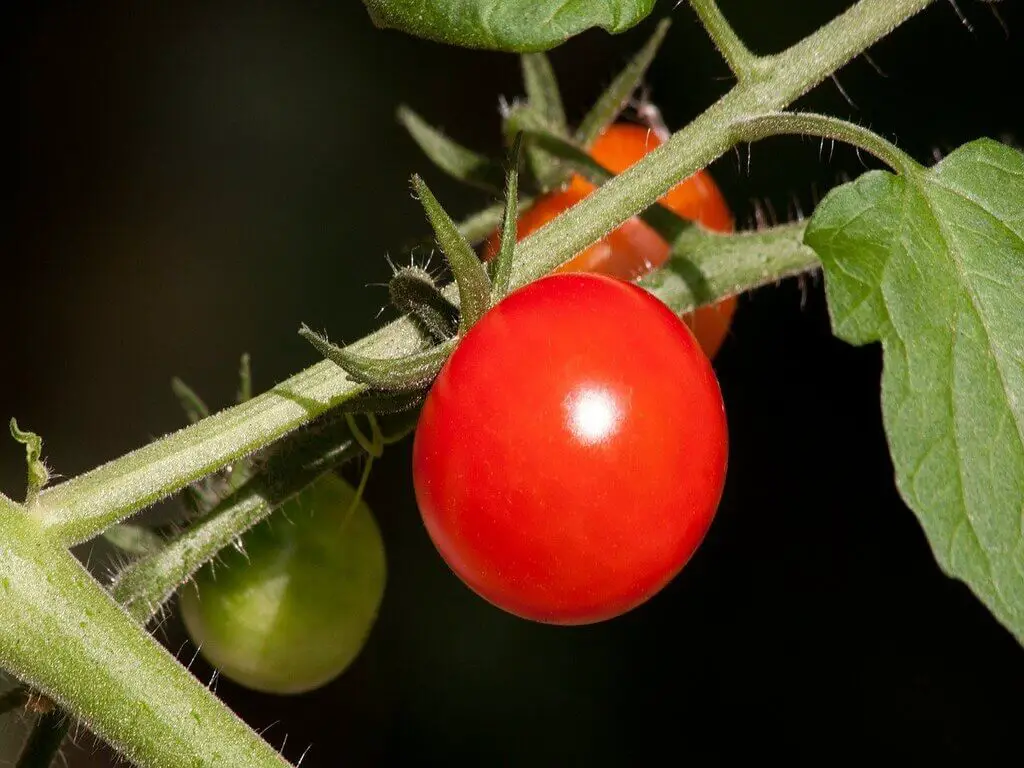
Generally, the mortgage lifter tomato plants spread by open pollination. They produce a beefsteak-shaped fruit, usually pinkish-red in color, weighing almost two pounds. Interestingly, these tomato fruits mature in about 3 months (approximately 80 – 85 days) time and have very few seeds.
These tomato plants can usually grow long vines, about 7 – 9 feet. They exhibit indeterminate characteristics. This simply means they develop tomatoes throughout the growing season continuously. The ‘unique delicious taste of this variety is the reason behind its unmatched popularity in the market.
Propagation of Mortgage Lifter Tomatoes
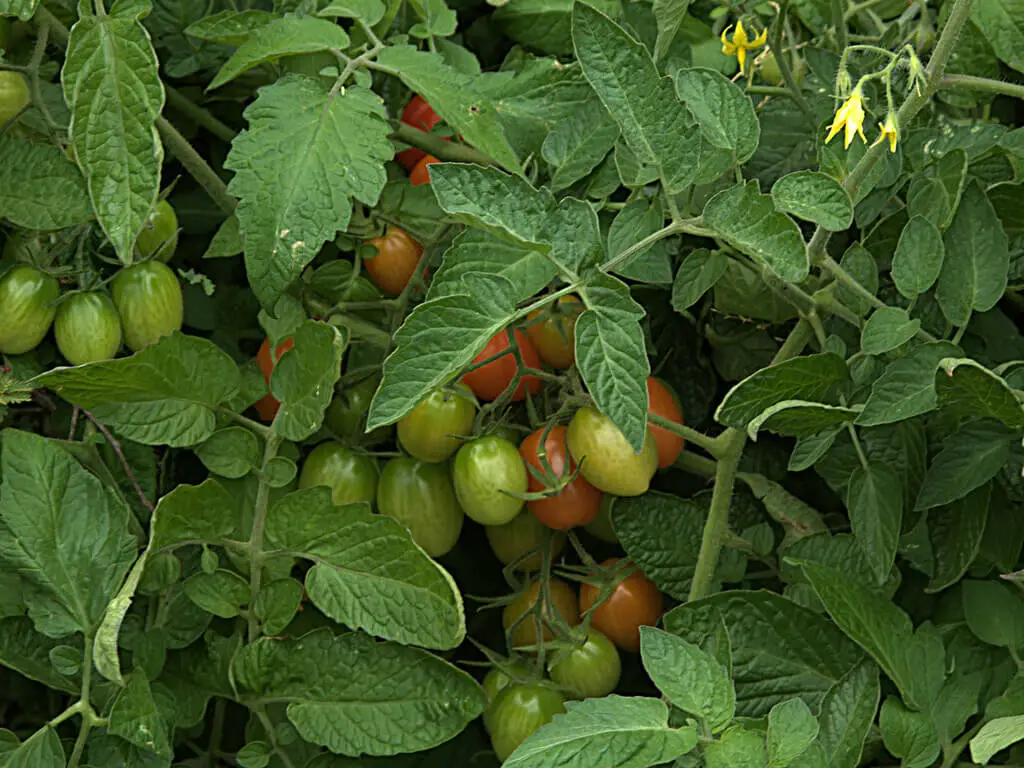
Photo by John Rusk (CC BY 2.0)
Generally, the tomato plants prefer to grow in well-draining fertile soil that has rich organic content. You can expect high yields by growing mortgage lifter tomatoes in loam and clay soils. However, the loose soils that can warm and drain quicker, can help yield faster.
Normally, these plants can tolerate mild acidic soils. The ideal soil PH is between 6.0-6.8 to grow them.
Amend the soil with a good fertilizer that is rich in potassium and phosphorus. Make sure the nitrogen content of the fertilizer is moderate. Otherwise, plants will sprout more foliage than fruits.
Generally, these plants are tropical natives. So, they prefer to grow in spaces that receive at least 8-9 hours of direct sunlight. The more the sun rays fall on them, the faster they grow.
From Seeds
You can start the process 6-8 weeks before the final frost date, indoors. Sow the seeds at least 1/ 2 inch deep in a container. Before that, make sure to fill the container with a soilless starting mix that drains well.
Normally, these seeds require warm soil, preferably about 65-90 degrees Fahrenheit to germinate faster. Maintain the soil moisture till the germination. After that, water minimum to moderate when you see the seedlings growing out of the soil.
When the danger of frost passes, harden off the mortgage lifter plants (Solanum lycopersicum) for transplanting. Make sure the weather has warmed up a bit more than 65 degrees Fahrenheit. Else, these fruits can be affected by catfacing (Psychological damage in Solanum lycopersicum).
Start transplanting after the weather is a bit warm and soil temperature rises above 65 degrees Fahrenheit. Consider transplanting smaller, short, sturdy, and dark green plants. Avoid transplanting already flowered, tall, yellowish or leggy plants. It is because mature plants often tend to stall after the transplantation.
While transplanting, space the plants 30 to 48 inches apart in straight rows. Make sure the distance between rows is 3 – 4 feet. This ensures adequate airflow and room for the plants to grow healthier.
Cover the soil around the plant with plastic mulch, row covers, or other similar protection materials. Maintain this arrangement until the outside temperature exceeds 85 degrees Fahrenheit.
It is advisable to avoid transplanting in spaces for at least two years where you have already grown potatoes, eggplant, peppers tomatoes, Etc.,
Growth Support Equipment
If you prefer to grow Solanum lycopersicum indoors entirely, you can make use of potato planer bags or grow bags. You can place these bags anywhere in your houses like balconies, patios, walk areas, sunrooms, indoor gardens, or outdoor gardens.
If you prefer to grow Solanum lycopersicum outdoors, make sure to use cages and stakes. They can support long vines. This arrangement helps plants to develop commercially viable large-size fruits. In addition, it helps harvesting tomatoes easier.
Caring Mortgage Lifter Tomatoes (Solanum lycopersicum)
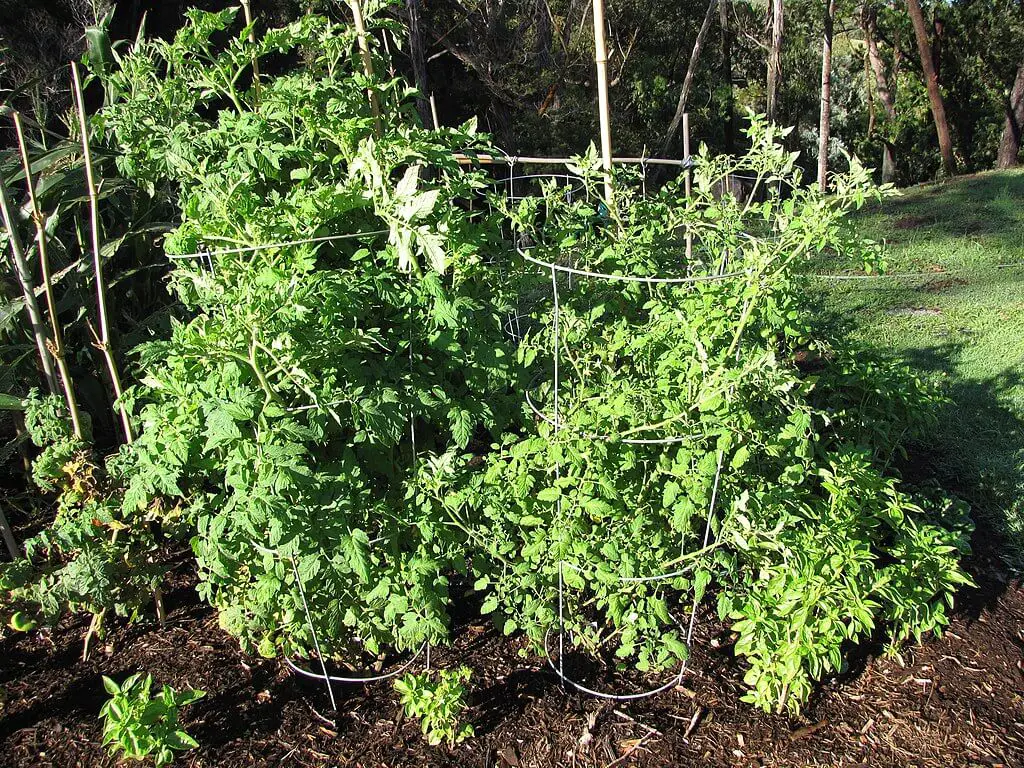
Photo by Forest and Kim Starr ( Wikimedia Commons) (CC BY 3.0 US)
Generally, mulching helps to control weeds and maintain soil moisture. Water the plants regularly and always maintain the soil moisture.
Stalking and Pruning the mortgage lifter plants (Solanum lycopersicum) can quicken the initial harvest by a couple of weeks. It also improves fruit quality and makes the harvesting process much easier.
However, the stalking and pruning may cause the fruits likely to be affected by sunscald, blossom end rot, and other common plant diseases.
You can use wooden stalks or other similar ones for stalking. Drive them 8-10 inches deep at the time of transplanting itself. This helps to prevent root damage.
Prune the plants to a couple of vigorous stems by chipping off the sucker stems (The extra stems that shoot from the point of contact between leaf stems and main stems). Start tying the main stem 8-12 inches above the ground with the stalks in spiral form. Repeat the tying process at regular intervals as the stem grows.
Alternatively, you can place stalks in between the plants growing in rows. You can tie multiple nearby plants to a common stalk.
You also have a third option of growing mortgage lifter plants (Solanum lycopersicum) in cages. Just place the cage around the plants while transplanting and anchor the stalks with It.
Normally poor fruits setting is caused by heavy rainfall, extreme temperatures (below 55F or above 90 F), or excessive N applications. Just apply 1/2 cup of 5-10-5 fertilizer per plant when the fruits measure 1 inch in diameter and also when you start the harvest.
Pollination

Photo by André Karwath aka ( Wikimedia Commons) (CC BY-SA 2.5)
Generally, if you plant tomato varieties in close proximity, pollen from the male part of one plant enters the female part of another plant. Most often wind or insects facilitate this transportation process. This is called cross-pollination.
Thus, fertilization occurs and results in the production of new seeds. As a result, the new seeds contain genes of both plants. They produce different progeny of plants in the successive generations. However, the current fruit will not undergo any changes and will be perfectly normal.
If you do not intend to save seeds, you can completely ignore cross-pollination.
Moreover, if you want your tomato seed lines to remain pure, without mixing other genes, make use of a physical barrier. Most gardeners use a simple method called “bagging” to prevent cross-pollination.
It simply means to cover the flowers before they could open up. You can use floating row cover or other like materials for this purpose. However, you should remove the covers after the (self) pollination. This helps the fruit to grow to its full potential.
In addition, you can mark the fruits with a string or yarn. This helps in saving seeds after the fruit matures. However, you may get a low quantity of seeds in this method.
If you desire to collect a large number of seeds, isolate the whole planting area in a single large screening cage. You can also use multiple large screening cages if you have larger planting areas.
Harvesting Mortgage Lifter Tomatoes
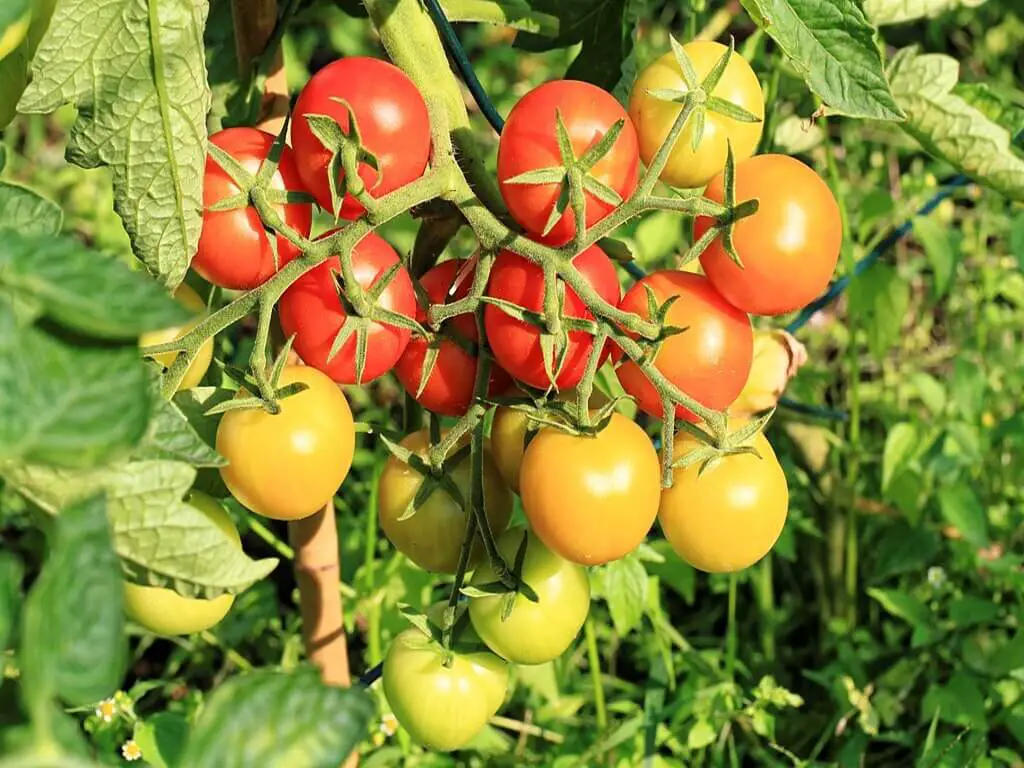
Photo by GFDL ( Wikimedia Commons) (CC BY-SA 3.0)
Normally, the mortgage lifter tomatoes (Solanum lycopersicum) ripening on vines have full potential flavor. However, most of the vine ripening fruits tend to crack. So, pick them up a tad before they attain the peak of redness.
You can also pick them earlier and allow them to ripen separately. But you cannot expect full potential flavor.
Generally, the tomatoes start ripening from bottoms. So, keep a watch on tomato bottoms. Some varieties, including large heirloom types, ripen before developing full color all around. So, if you find the tomato skin turning waxy and smooth, start collecting them.
Normally, the newly developed flowers cannot mature during the frost. So, Snip off the top portion of plants and newly developed flowers before the first frost date (preferably, a month before the first frost date.) Use good quality shears for this purpose.
This method helps plants to divert their full energy to ripening existing tomatoes quickly, before the frost.
Generally, the tomatoes cannot ripen on vines when the daytime temperate falls below 60 degrees Fahrenheit consistently. So, collect all the fruits either green or red, and allow them to ripen indoors.
Collecting Seeds
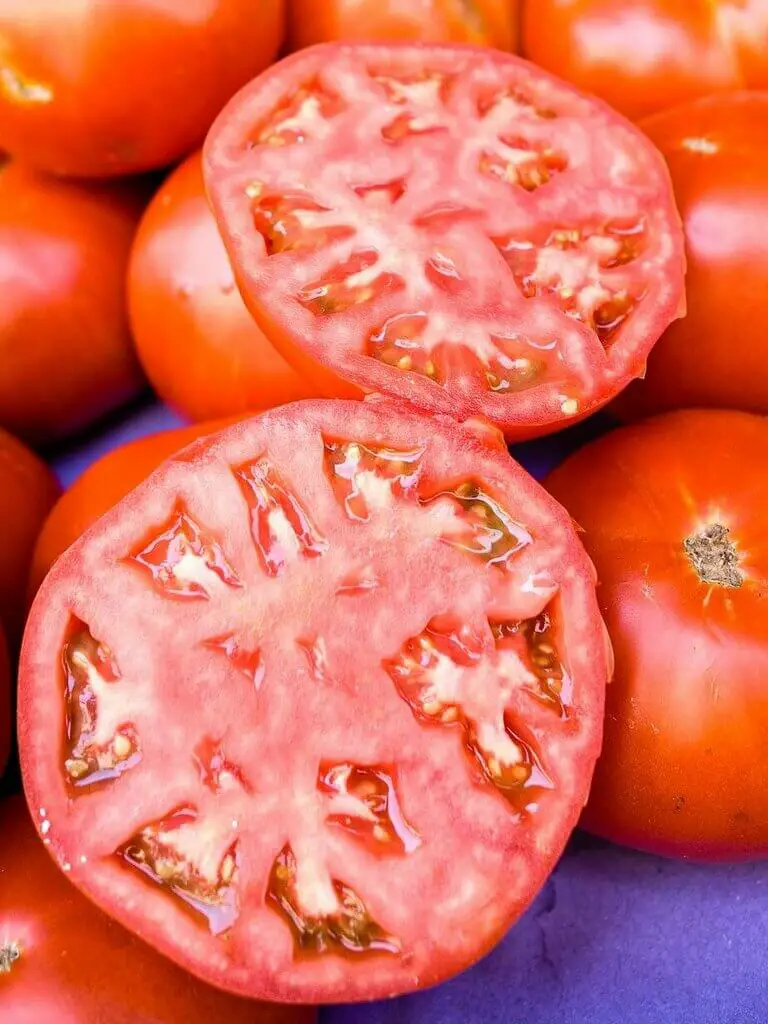
Saving the seeds from mortgage lifter tomatoes (Solanum lycopersicum) is a simple process.
Normally, the fruits contain numerous gelatinous sacks inside them. These gelatinous sacks have seeds and chemicals that prevent germination. When the fruits fall down and rot, these gelatinous sacks break due to natural germination.
By duplicating this process artificially, you can collect the seeds. This process also helps prevents seed-borne diseases in fruits.
Just cut the tomatoes into half using a sharp and clean knife. Squeeze out the gel and the seeds into a clean container. Keep the container in a dark and dry place for 3-4 days. This encourages natural fermentation.
During this process, the seeds develop an unpleasant odor. And develop a mold. This mold then coves the top surface fully.
After 3-4 days, add some water to the mold and stir. Healthy seeds will sink down to the bottom of the container. Pour off the mold and unhealthy seeds that float. Repeat this process multiple times and collect healthy seeds.
Alternatively, you can use a sieve to wash off the molds and weak seeds under running water.
After that, dry the seeds by speeding them on a ceramic or glass plate. This process may last about a couple of weeks. collect the dried healthy seeds in sealed packs and store them in dark and dry places. Make sure to maintain the storage area neat and clean. You can use them for up to 10 years, depending on the storage conditions.
Pests
The Phthorimaea operculella (Potato Tuber moth) is one of the common insects that damages mortgage lifter tomato plants. It usually feeds on almost all member plants of Solanaceae family including mortgage lifter tomatoes.
Generally, the female insects lay eggs on the leaves. The larvae eat off the leaf’s mesophyll, digging through the epidermis. These larvae can even tunnel through the veins. This tunnel acts as entry points to various diseases and finally, the plant dies.
You can treat Potato Tuber moth effectively with insecticides that contain abamectin. We recommend you to apply this chemical during the season end. It is because this is the time when the tubers develop maturing and vines start dying.
Uses
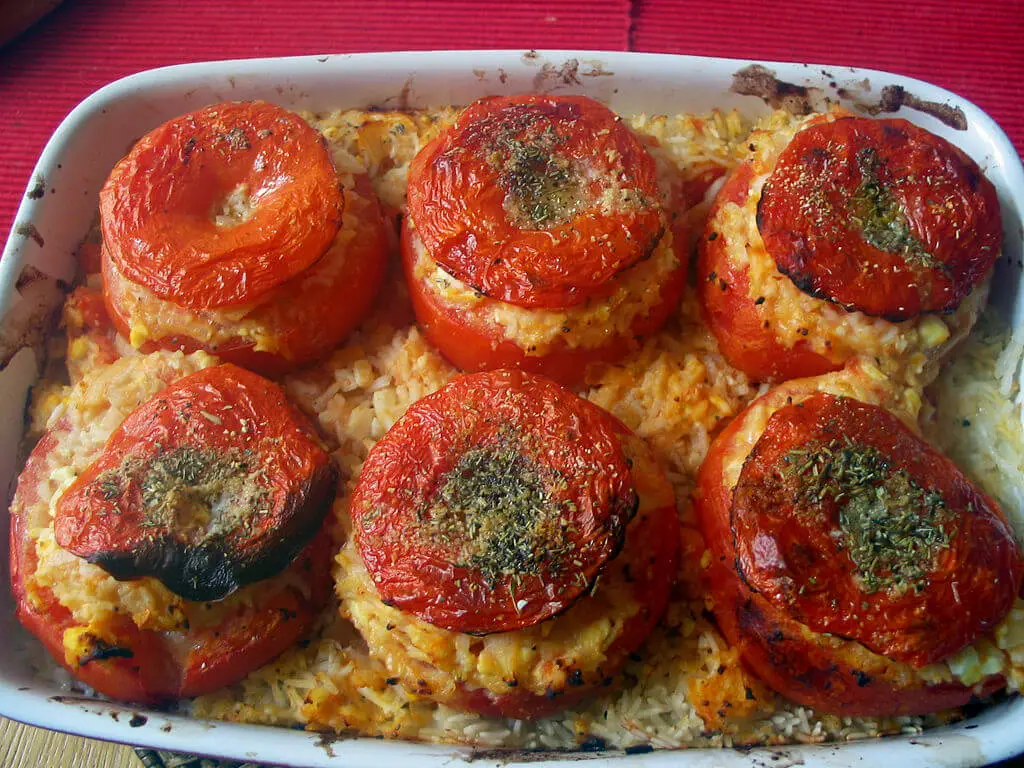
Photo by DocteurCosmos ( Wikimedia Commons) (CC BY-SA 3.0)
In fact, tomatoes are berries, a subset of commercially viable fruits. But consumers use it as a vegetable for culinary uses, due to its fantastic savory flavor.
The tomatoes are native to the American subcontinent. However, they gained importance in Mediterranean cuisines. The mortgage lifter tomatoes (Solanum lycopersicum) are rich in umami flavor. So, they serve as vital ingredients in pizzas and pasta.
These fruits are also used in Spanish cuisines (especially gazpacho) and Catalan cuisines (especially pa amb tomàquet)
In the modern era, you can see the extensive use of these fruits in a variety of foods. Many people use them raw in salads or burgers. Some use them in main dishes as slices or stew them for preparing side dishes.
The sauces and soups of these fruits attract children and adults alike. You can find them as main ingredients in southern US side dishes (breaded and fried), salsa varieties (Type of Sause usually used as table condiments in various Mexican- American foods), and other continental foods.
Tomato pickles are very popular in food markets around the world. Juice shops use these fruits for preparing delicious tomato juices, cocktails (especially Bloody Mary), and other tasty liquids.
Most Indian cuisines, especially south Indian cuisines are prepared based on tomato flavors. These dishes are one of the popular and most preferred dishes all around the world.
Similar Posts
Growing Tomatillos in Gardens
Growing Stinging Nettle in the Gardens

